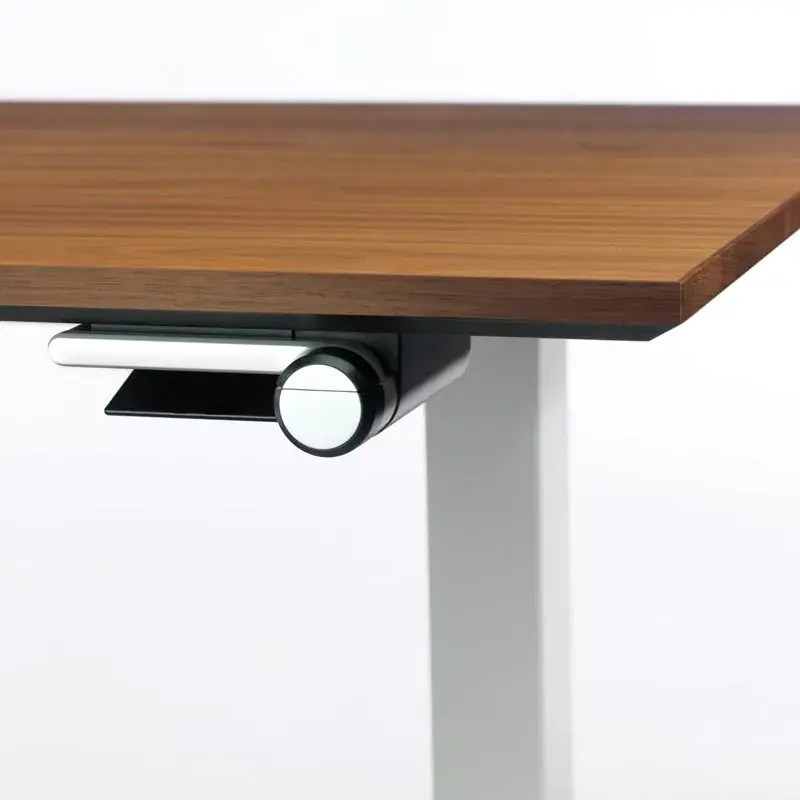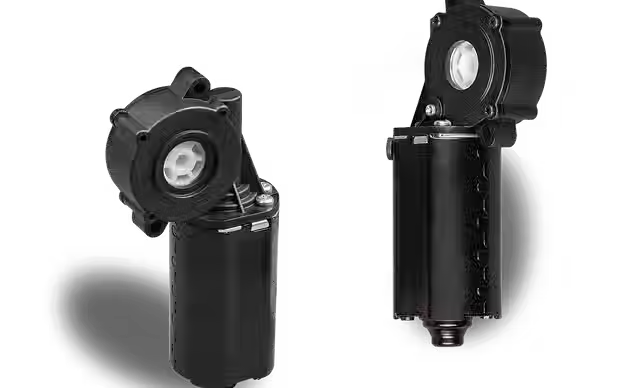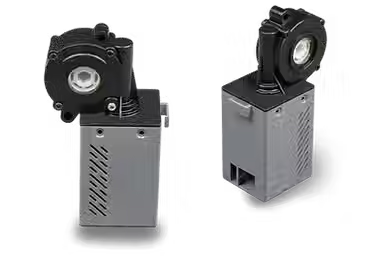Understanding DC Motors: Powering the Future of Smart Furniture
- Xie
- May 9
- 8 min read
Updated: May 11

In an era where ergonomic design seamlessly integrates with advanced technology, DC motors have become the unsung heroes driving the functionality of height-adjustable desks, smart workstations, and even modern ceiling fans. Whether you're delving into motorized furniture components or seeking to understand the inner workings of DC motors, this comprehensive guide will cover everything you need to know—from their core mechanisms to the efficiency and sustainability advantages they offer.
As one of the leading manufacturers of DC motors for desks, MEI MOVE is at the cutting edge of precision engineering, playing a pivotal role in revolutionizing the performance of modern furniture. If you've ever found yourself asking, "How does a DC motor work?" or "Can a DC motor generate electricity?", this article is here to provide you with detailed insights—and much more.
Whether you're an office furniture manufacturer, a designer, or simply curious about the role DC motors play in the world of ergonomic furniture, MEI MOVE is your trusted partner in bringing the future of workspace technology to life. This guide will explore the many facets of DC motors, from their operation to their undeniable advantages in the realm of sustainable, efficient, and innovative furniture design.
DC Motor Guide for Height-Adjustable Desks Guideline:
What is a DC Motor?
A DC (Direct Current) motor is an electric motor that converts electrical energy from a direct current source into mechanical energy. These motors are widely used in applications that demand variable speed, precise control, and quiet operation, making them ideal for a range of industries including adjustable desks, medical beds, wheelchairs, robotics, and small appliances.
Unlike AC motors, DC motors operate using direct current, which makes them particularly well-suited for battery-powered systems and low-voltage environments. Their simplicity in design, coupled with high efficiency and adaptability, has made DC motors an essential component in modern motion technology. Their ability to deliver smooth, controllable movement with minimal noise is what sets them apart, making them a go-to choice in a variety of applications, from home and healthcare settings to industrial automation and beyond.
How DC Motor Works
One of the most common questions people ask is, "How does a DC motor work?"—and for good reason. Understanding the inner workings of a DC motor not only provides insight into its functionality but also highlights its versatility in various applications. By grasping the fundamental mechanism, one can better appreciate why DC motors are a cornerstone in fields ranging from home appliances to advanced robotics and industrial machinery.
Key Components of a DC Motor
Rotor (Armature): The rotating component connected to the output shaft, which converts electrical energy into mechanical motion.
Stator: The stationary part that generates the magnetic field, enabling the rotor to rotate.
Commutator: A rotary switch that periodically reverses the direction of current in the armature windings, ensuring continuous rotation.
Brushes: Carbon or metal components that conduct electrical current from the stationary parts to the rotating armature, ensuring proper electrical contact.
Windings: Coiled copper wires wrapped around the rotor, creating a magnetic field when current flows through them, which interacts with the stator's field to produce motion.
How It Generates Motion
When voltage is applied to the motor terminals, electrical current flows through the brushes, reaching the commutator and then into the armature windings.
This current generates a magnetic field around the armature.
The interaction between the magnetic field of the armature and that of the stator creates a force, causing the rotor to rotate.
As the rotor spins, the commutator periodically reverses the current flow direction at precise intervals, ensuring continuous and smooth rotation.
This straightforward yet highly effective design allows for smooth, precise control, which is crucial for applications like motorized desks that demand quiet, reliable, and adjustable motion.
Why DC Motors Are Essential for Motorized Desks
DC motors have quickly become the go-to choice for adjustable desks and smart office furniture, and it's easy to see why:
Precision and Control
DC motors offer exceptional control over speed and position, making them ideal for applications that require subtle, precise adjustments—such as height-adjustable desks. With the ability to smoothly transition between sitting and standing positions, these motors ensure user comfort and promote productivity in a quiet, energy-efficient manner.
Low Noise Operation
Unlike some AC motors, DC motors operate quietly, which is essential for maintaining a peaceful work environment.
Energy Efficiency
DC motors consume less energy and generate less heat, making them both eco-friendly and cost-effective for long-term use. Their energy-efficient design reduces power consumption, contributing to lower utility bills and a smaller environmental footprint, all while maintaining reliable performance over time.
Compact Design
Their compact size allows for seamless integration into desk frames, preserving both aesthetics and stability. This unobtrusive design ensures that the motor operates effectively while maintaining the sleek, modern appearance of the desk.
Are DC Motor Ceiling Fans Better?
The question “Are DC motor ceiling fans better?” frequently comes up when comparing fan technologies. Let’s take a closer look at how DC motors perform in this context:
Energy Efficiency
DC motor fans can consume up to 70% less energy than traditional AC motor fans, making them a more efficient and eco-friendly option.
Quiet Operation
Their whisper-quiet performance makes them ideal for bedrooms, libraries, and offices.
Variable Speed Control
DC motors offer a wider range of speed settings and smoother transitions, providing better airflow customization.
Lightweight and Compact
DC motors are typically smaller and lighter than AC motors, making installation easier and allowing for sleeker fan designs.
Smart Integration
Modern DC motor ceiling fans are often compatible with smart home systems, allowing control via remote, apps, or voice assistants.
In short, yes — DC motor ceiling fans are better in most modern settings, offering a blend of performance, efficiency, and innovation.

Can DC Motor Generate Electricity?
An interesting property of DC motors is their ability to function as generators. So, can a DC motor generate electricity? The answer is a resounding yes — under the right conditions. When the motor is driven by an external force (like a spinning wheel or mechanical input), it can convert mechanical energy back into electrical energy, functioning as a generator.
How It Works
When a DC motor is turned mechanically (e.g., by hand or using a turbine), it can generate electricity. The process is essentially the reverse of its operation as a motor.
Mechanical energy spins the rotor.
This motion causes the armature windings to cut through the magnetic field.
The motion induces an electric current in the windings, which can then be captured and used.
Real-World Applications
Small wind turbines
Bicycle dynamos
Emergency hand-crank generators
Energy recovery systems in robotics
While DC motors are not typically used for large-scale electricity generation, their dual functionality makes them useful in renewable energy and DIY projects.
Advantages of DC Motors Over AC Motors
For many applications, especially in motorized furniture, DC motors outperform AC motors in the following ways:
Feature | DC Motors | AC Motors |
Energy Efficiency | High | Moderate |
Noise | Very Low | Moderate |
Speed Control | Excellent | Limited |
Size | Compact | Bulkier |
Initial Cost | Slightly Higher | Lower |
Smart Integration | Easy | Requires Conversion |
These attributes explain why MEI MOVE uses DC motors in all its motorized desk solutions.
Why MEI MOVE is a Trusted DC Motor Manufacturer
At MEI MOVE, we don't just build DC motors — we engineer the future of ergonomic office solutions. Our products are crafted with industry-leading precision, offering a wide array of customizable applications to meet the diverse needs of modern workspaces. Whether it’s for height-adjustable desks or innovative furniture designs, our motors deliver unparalleled performance and reliability, ensuring both comfort and productivity for users worldwide.
Innovation Meets Experience
With years of R&D behind every product, MEI MOVE combines innovation with practical design to ensure our motors deliver optimal performance.
Industry Certifications
All MEI MOVE DC motors comply with global standards, including CE, RoHS, and ISO certifications, ensuring safety, durability, and eco-compliance.
Scalable Manufacturing
Whether you need motors for 100 desks or 10,000, MEI MOVE has the manufacturing capabilities to meet high-volume demands without compromising quality.
Tailored Solutions
We offer customized motor designs for clients who need specific torque ratings, dimensions, or control interfaces — perfect for OEMs and furniture manufacturers.
Emerging Trends in DC Motor Technology
As the market for smart furniture grows, DC motor technology is evolving to meet new demands:
Brushless DC Motors (BLDC)
Offering even quieter operation, longer life spans, and minimal maintenance.
Integrated Sensor Systems
Allowing for position feedback, auto-calibration, and real-time load monitoring.
IoT Compatibility
Enabling remote control and diagnostics via Bluetooth, Wi-Fi, or Zigbee.
Sustainable Manufacturing
Using recyclable materials and eco-friendly production processes to reduce environmental impact.

Choosing the Right DC Motor for Your Desk
Before selecting a motor for your adjustable desk or smart furniture application, consider these factors:
Load Capacity
How much weight will the motor need to lift?
Stroke Length and Speed
Determine the range of motion and how fast you want the desk to adjust.
Noise Level
Look for motors designed for quiet operation, typically below 50 dB.
Control Options
Do you need manual buttons, a mobile app, or voice assistant integration?
Duty Cycle
This tells you how long the motor can run continuously without overheating — critical for longevity.
Customization Needs
If your design requires unique mounting, dimensions, or torque specs, opt for a manufacturer that offers custom DC motor solutions like MEI MOVE.
Conclusion
From how DC motor works to answering “can DC motor generate electricity” and “are DC motor ceiling fans better”, it’s clear that DC motors are revolutionizing multiple industries, especially when it comes to smart office furniture.
As a trusted DC motor manufacturer for desks, MEI MOVE delivers efficient, reliable, and innovative motion solutions tailored for the modern workplace. Whether you’re developing the next big thing in adjustable desks or upgrading existing models for better performance, we have the technology and expertise to power your vision.
FAQs
1. Are DC motor ceiling fans better than traditional fans?
Yes, DC motor ceiling fans are generally better than traditional AC motor fans in several ways. They are significantly more energy-efficient—using up to 70% less power—quieter during operation, and offer smoother speed control. DC fans also tend to have more speed settings, remote-control functionality, and faster startup times. These benefits make them ideal for modern homes and office environments focused on energy savings and comfort.
2. Can a DC motor generate electricity?
Technically, yes. A DC motor can be used as a generator if you manually rotate its shaft. When the motor's rotor spins, it can induce a voltage and generate direct current (DC) electricity. However, not all DC motors are efficient for power generation, especially at low speeds. Specialized DC generators are designed for this purpose, offering better performance and output stability.
3. How does a DC motor work?
A DC motor works by converting electrical energy into mechanical energy through the interaction of magnetic fields. When a direct current flows through the armature winding, it creates a magnetic field that interacts with the field magnets. This interaction generates torque, which rotates the motor’s shaft. The speed and direction of the motor can be easily controlled by adjusting the input voltage or current, making DC motors ideal for applications like height-adjustable desks and ceiling fans.
4. What makes DC motors ideal for height-adjustable desks?
DC motors provide quiet, smooth, and precise motion control, which is essential for ergonomic desks. Their compact size allows for sleek desk designs, while their efficiency ensures minimal power consumption. In addition, they respond quickly to input commands, whether from buttons, remote controls, or app-based systems.
5. Are DC motors durable for daily desk usage?
Absolutely. High-quality DC motors, such as those manufactured by MEI MOVE, are engineered for long-term durability. They are built with robust materials, thermal protection, and overload safeguards, ensuring consistent performance even with frequent daily use. Some motors are tested for tens of thousands of up/down cycles, ensuring years of reliable operation.






Comments